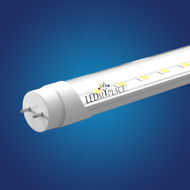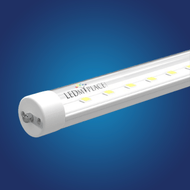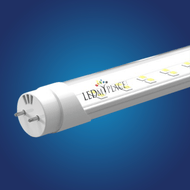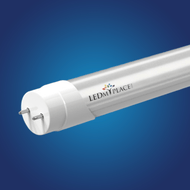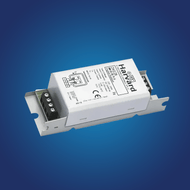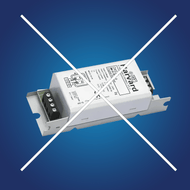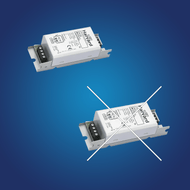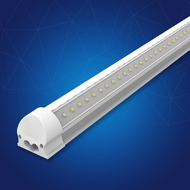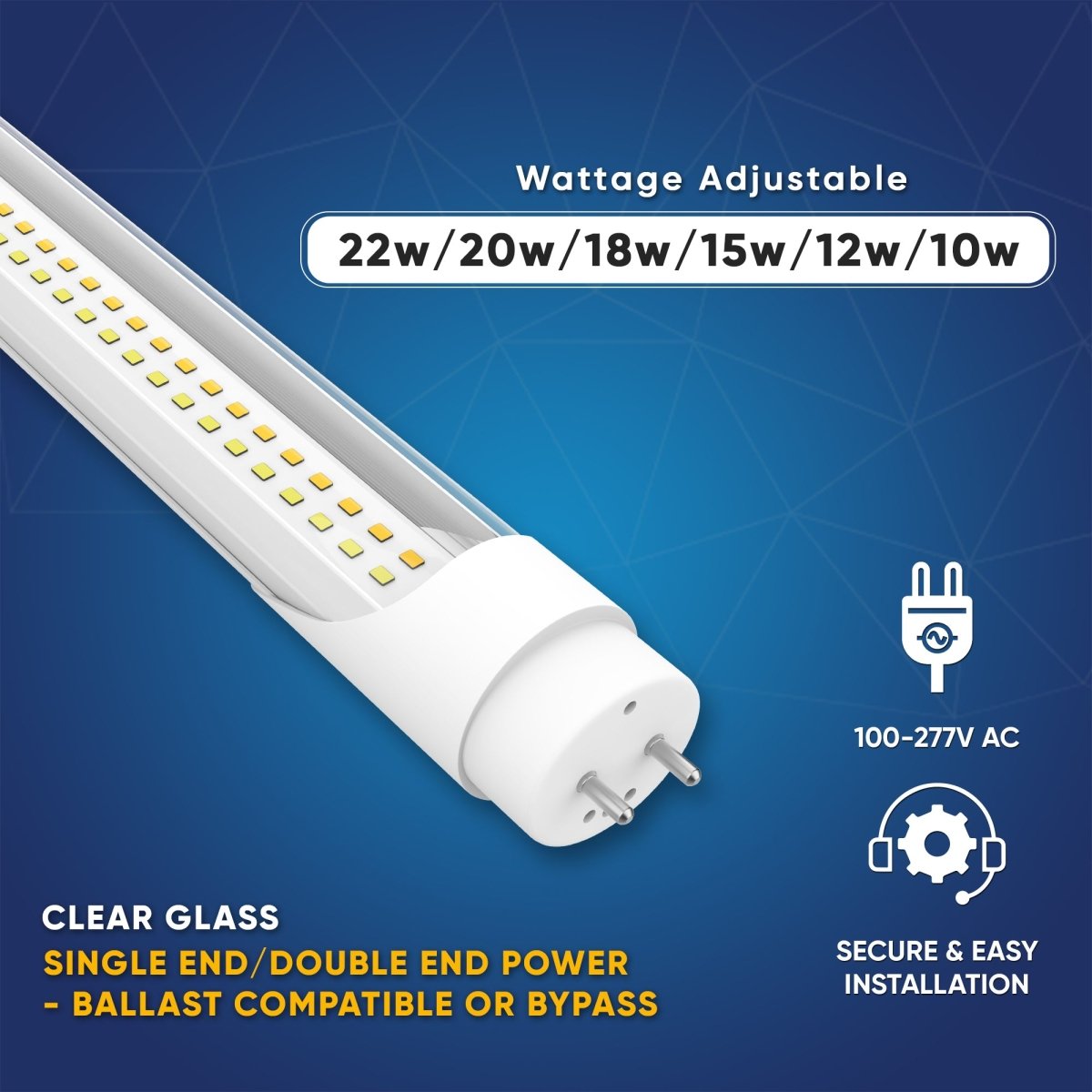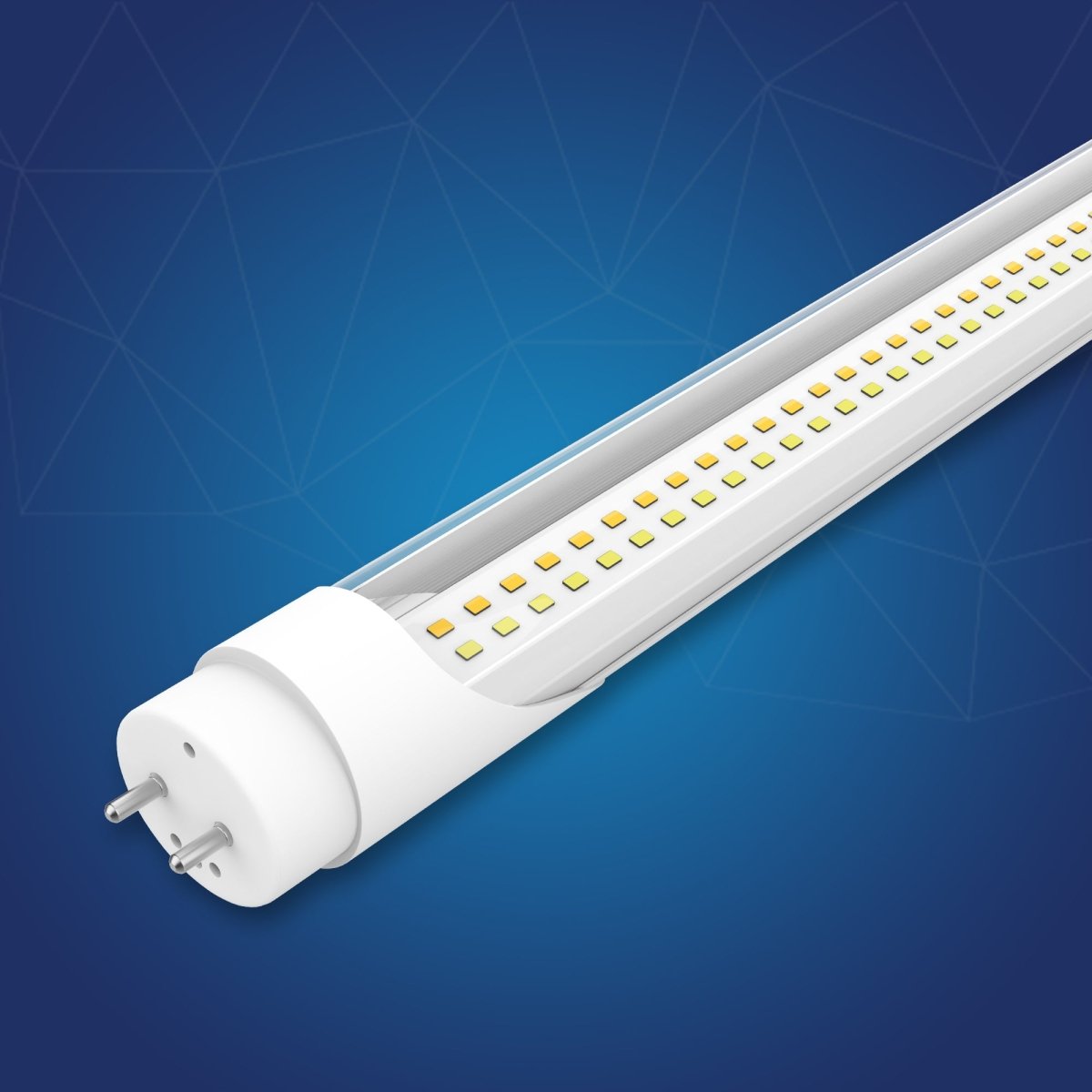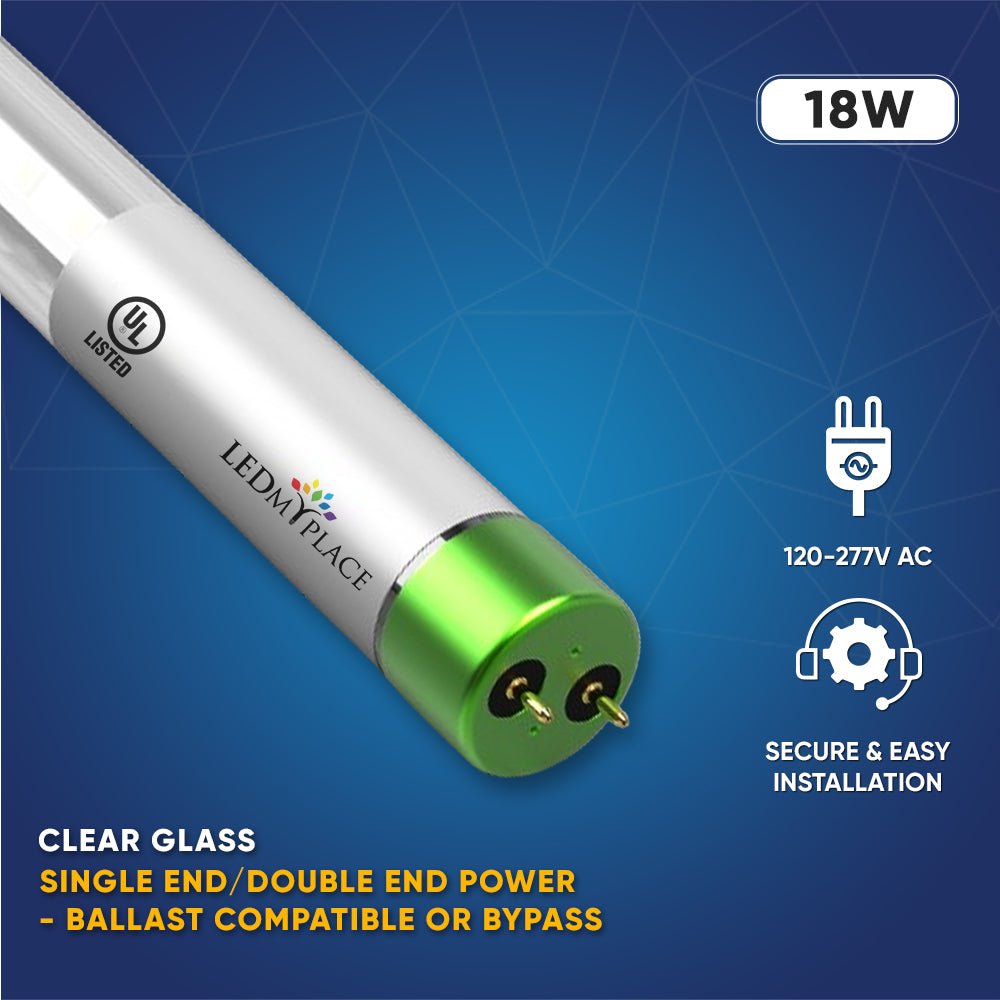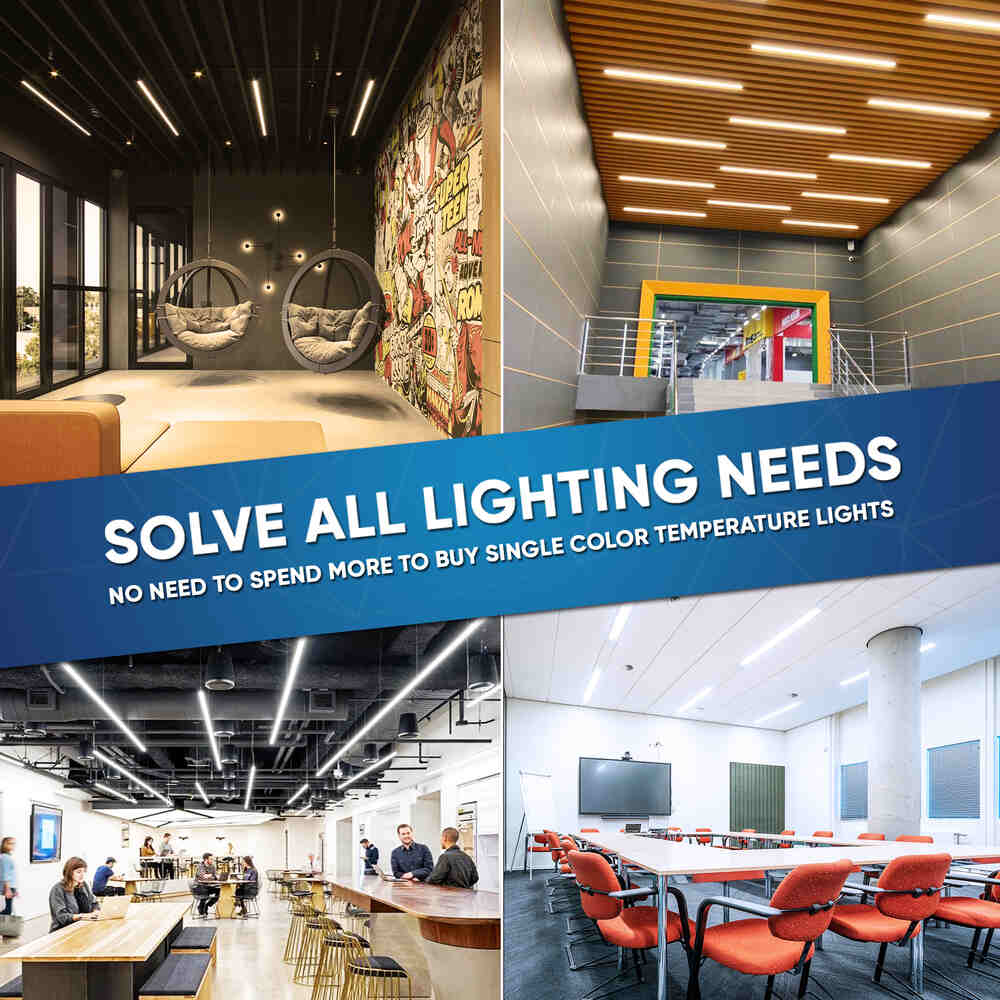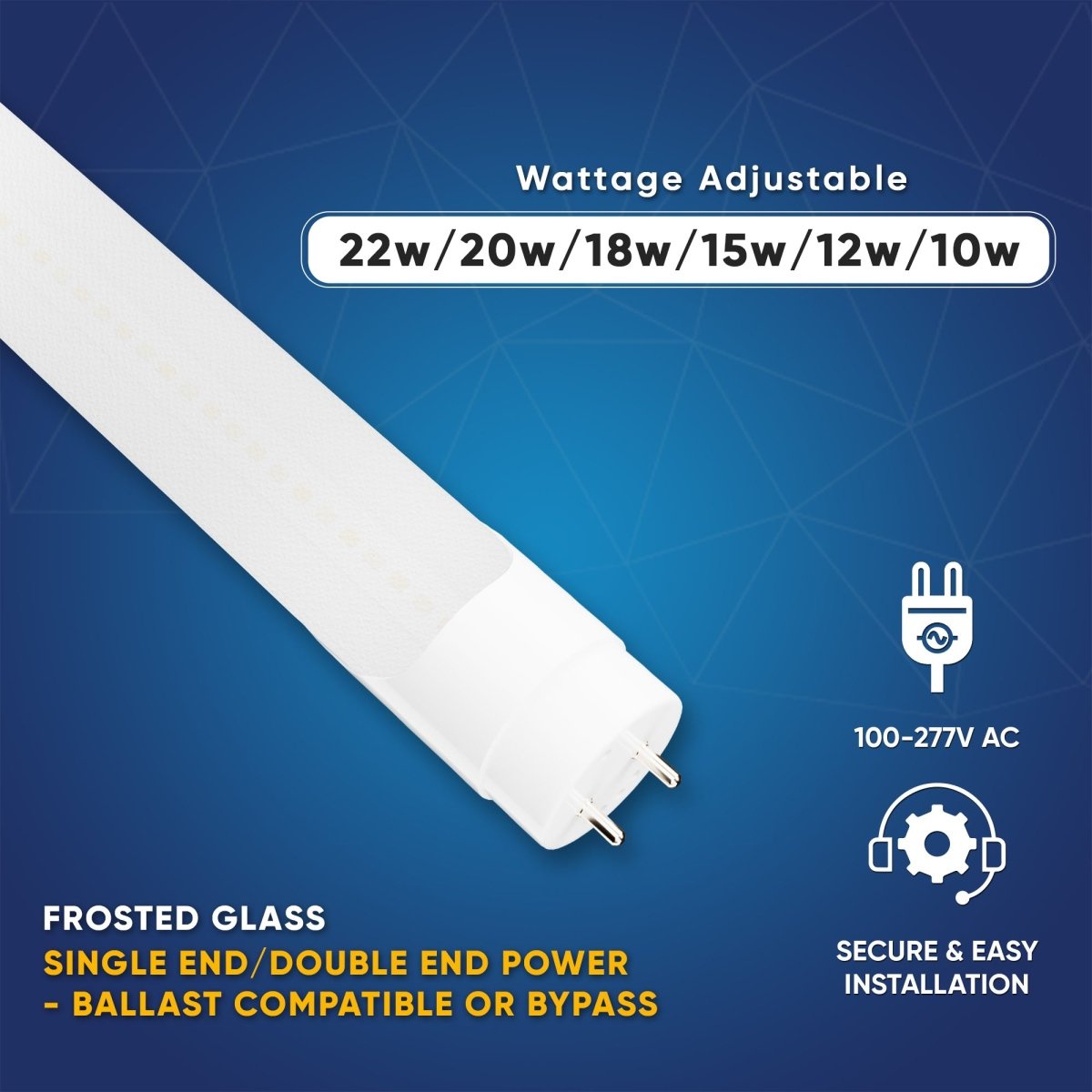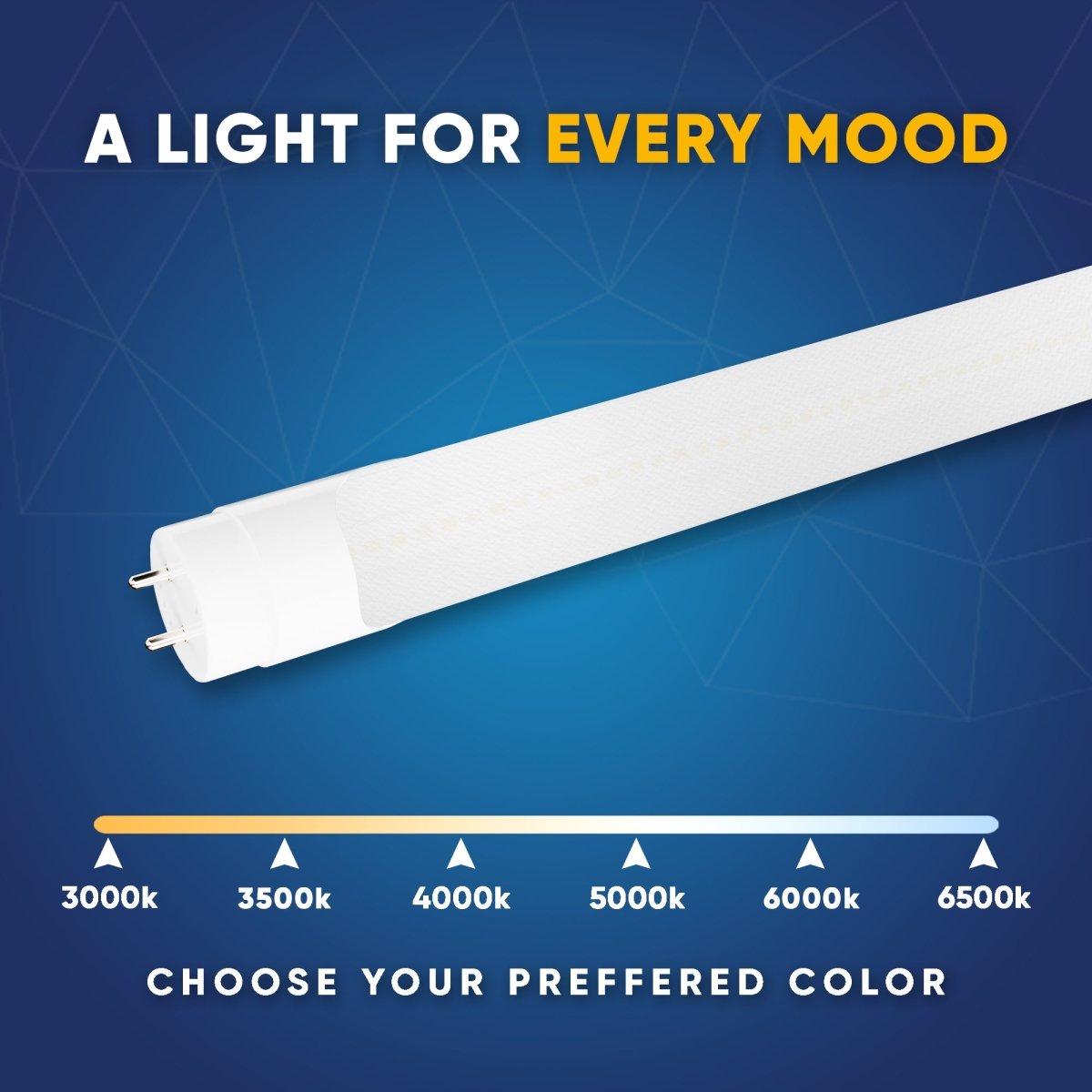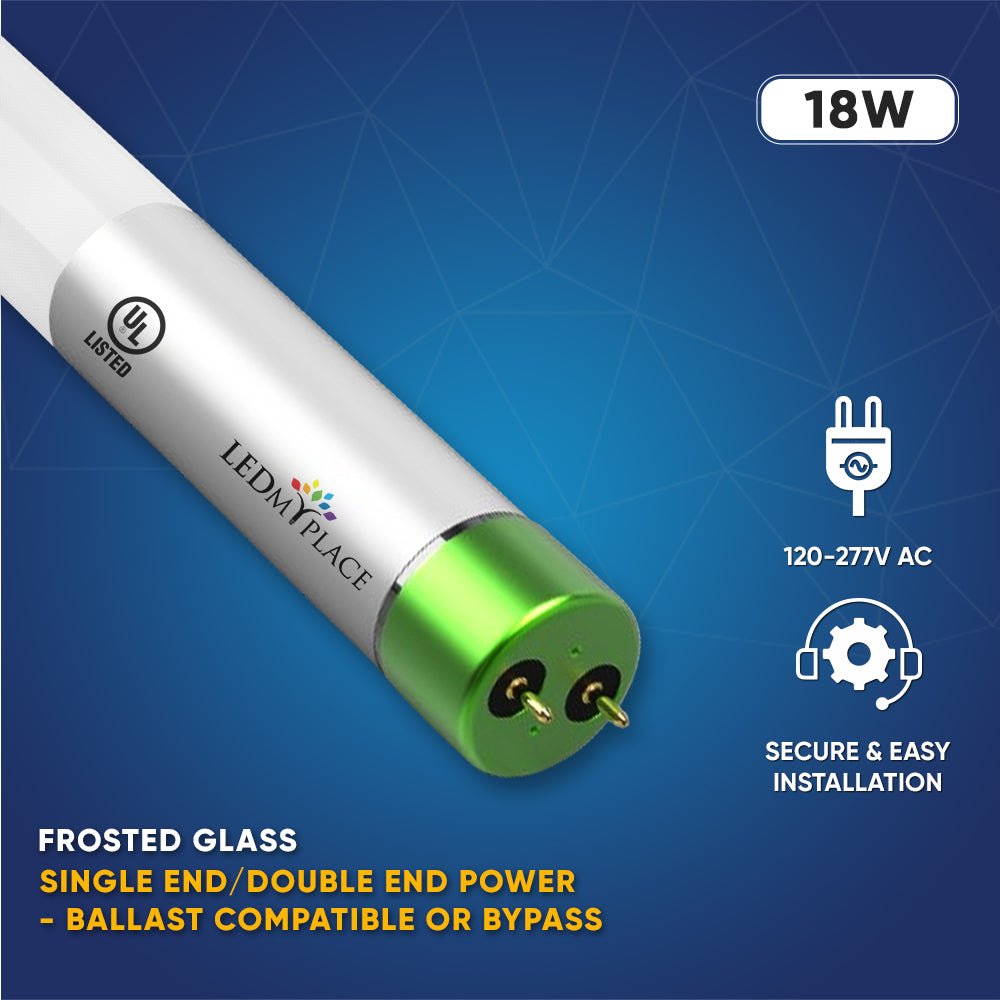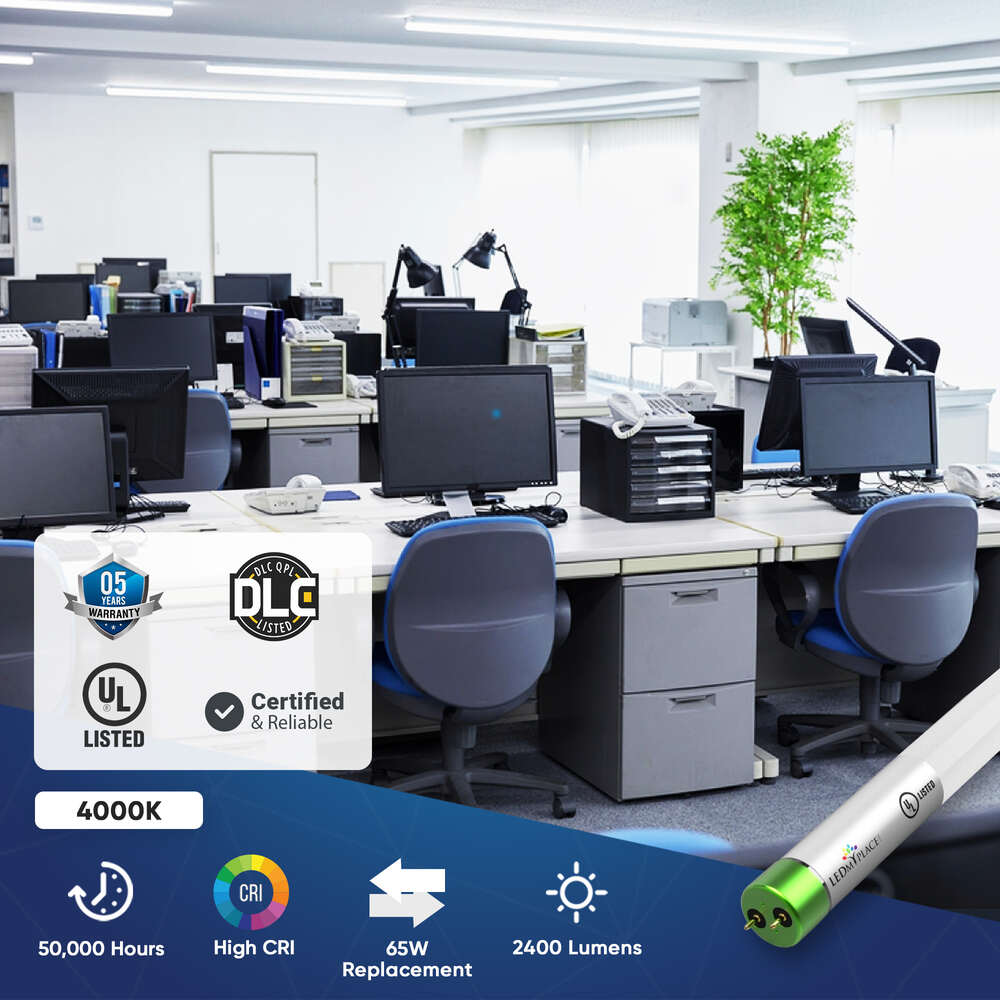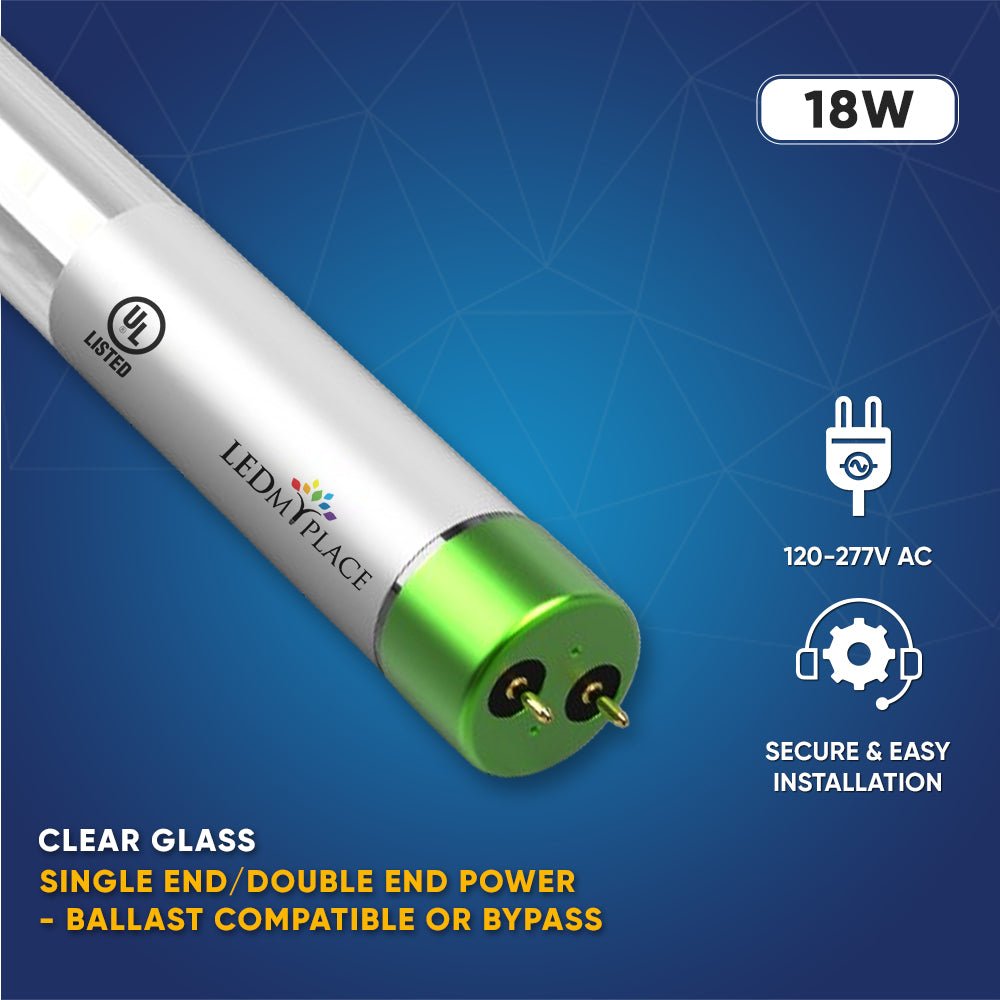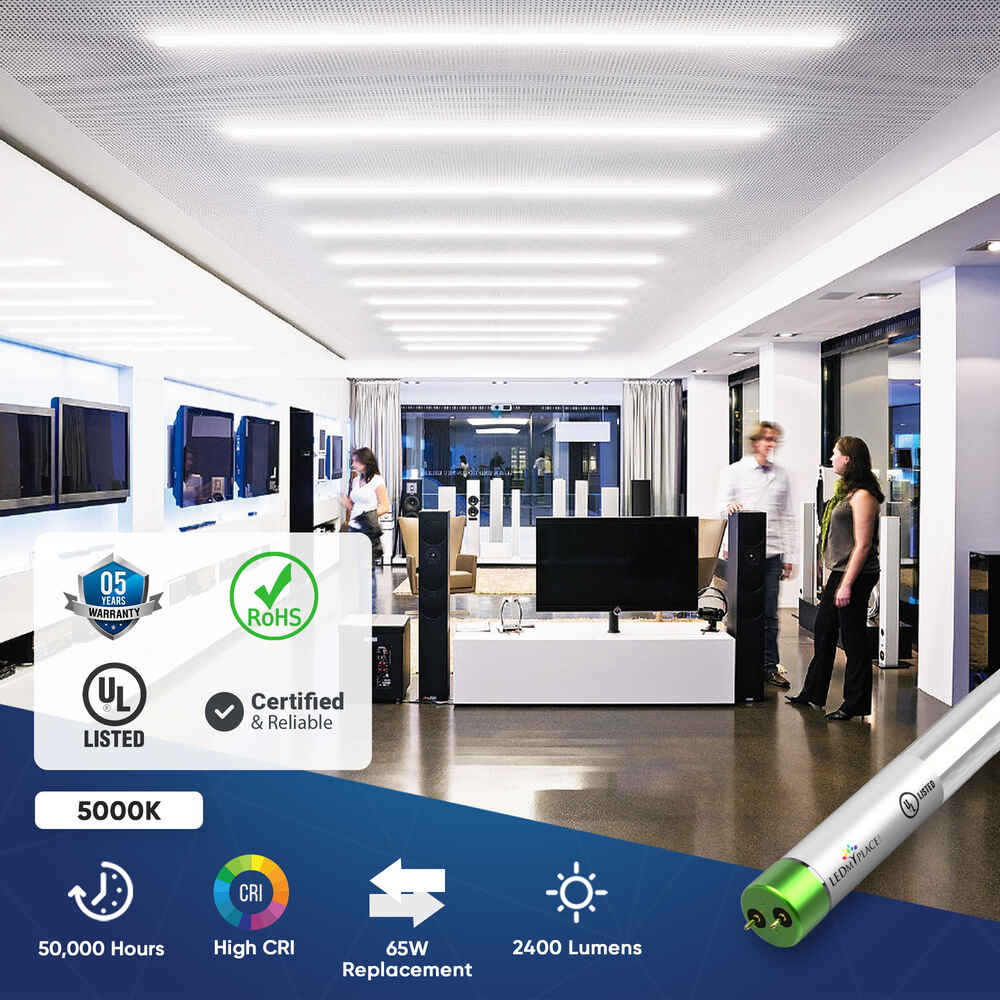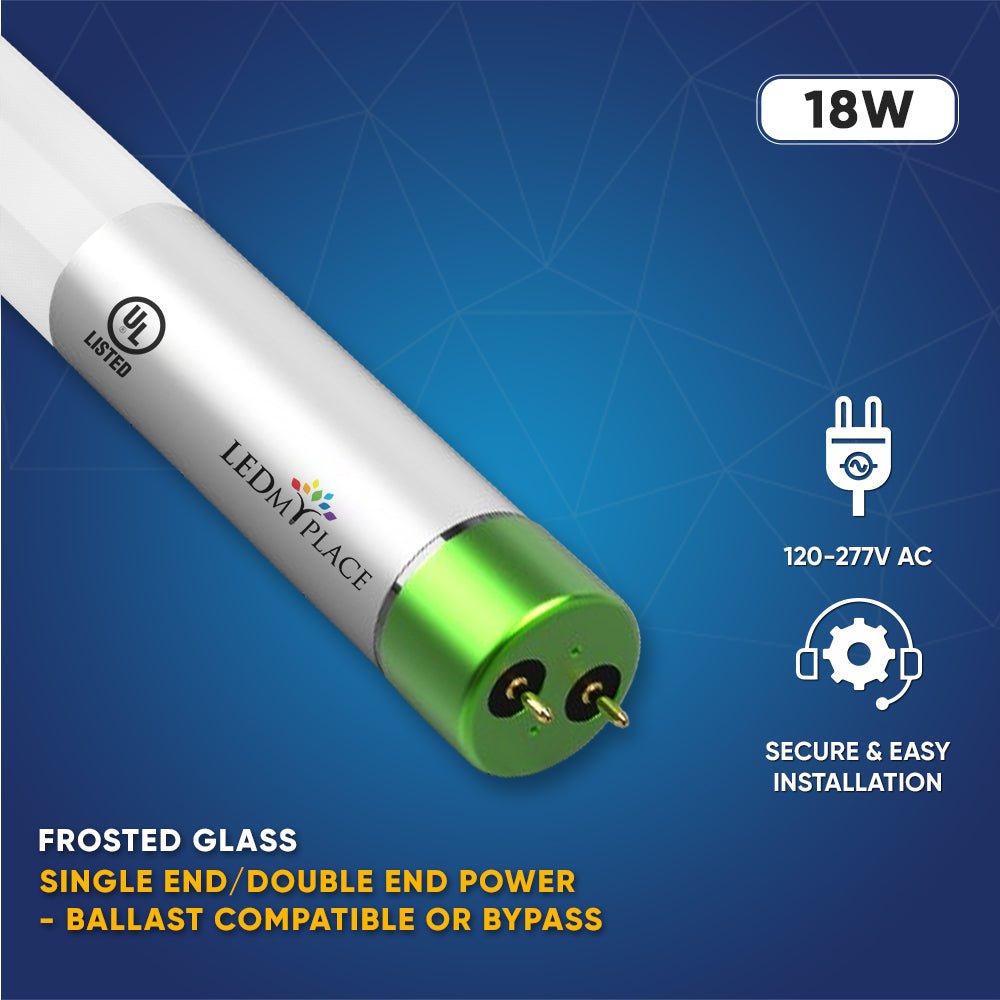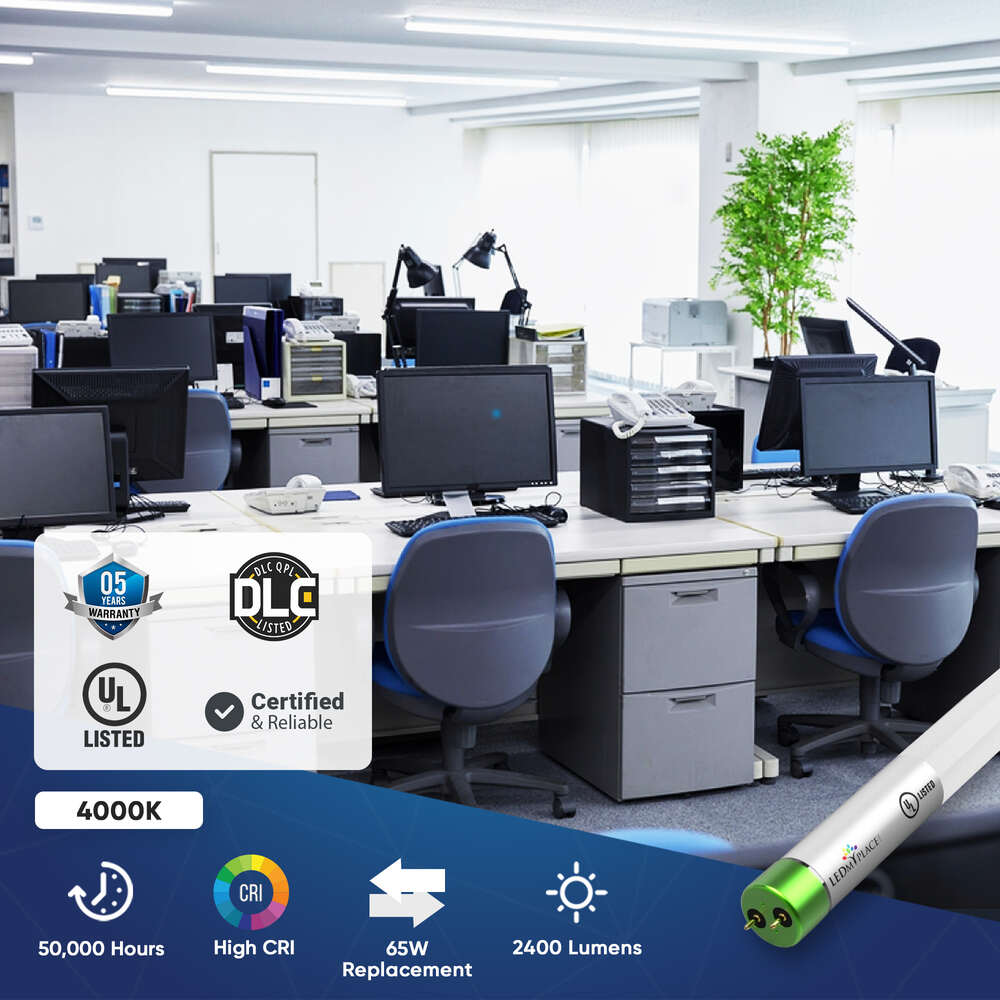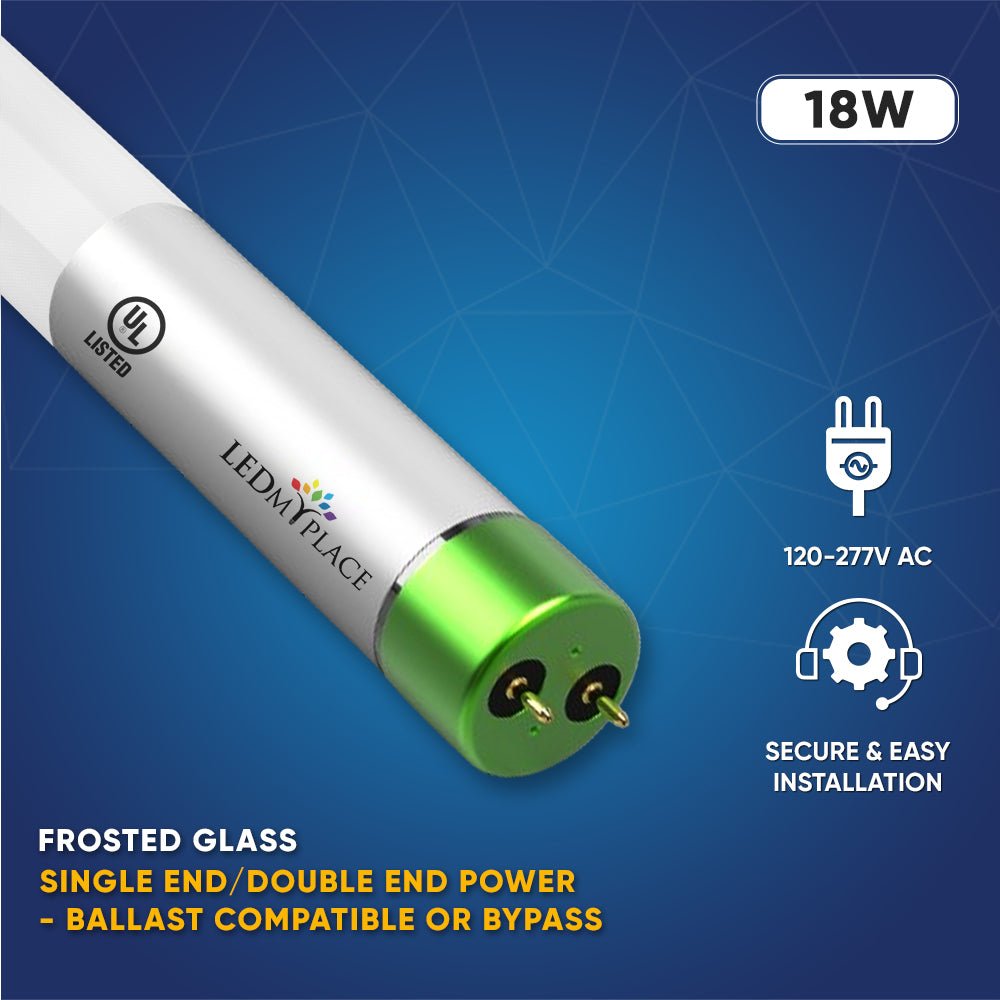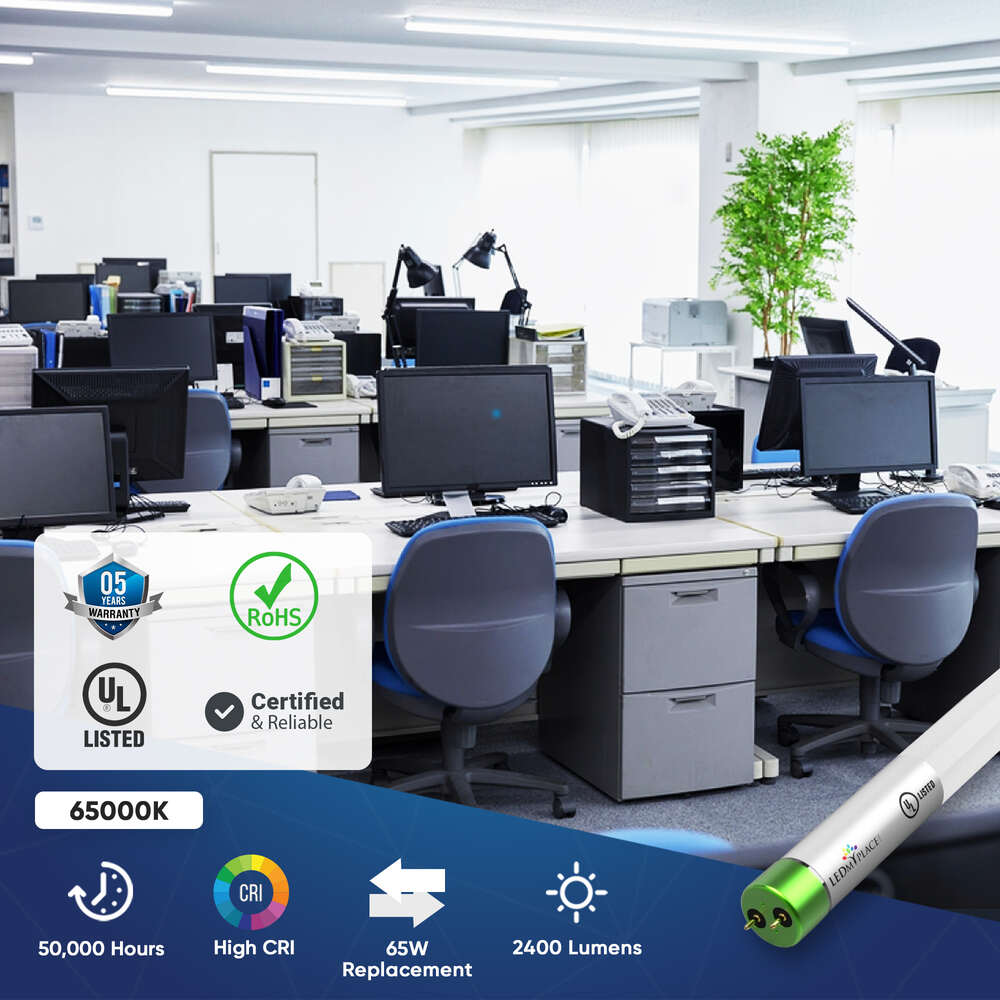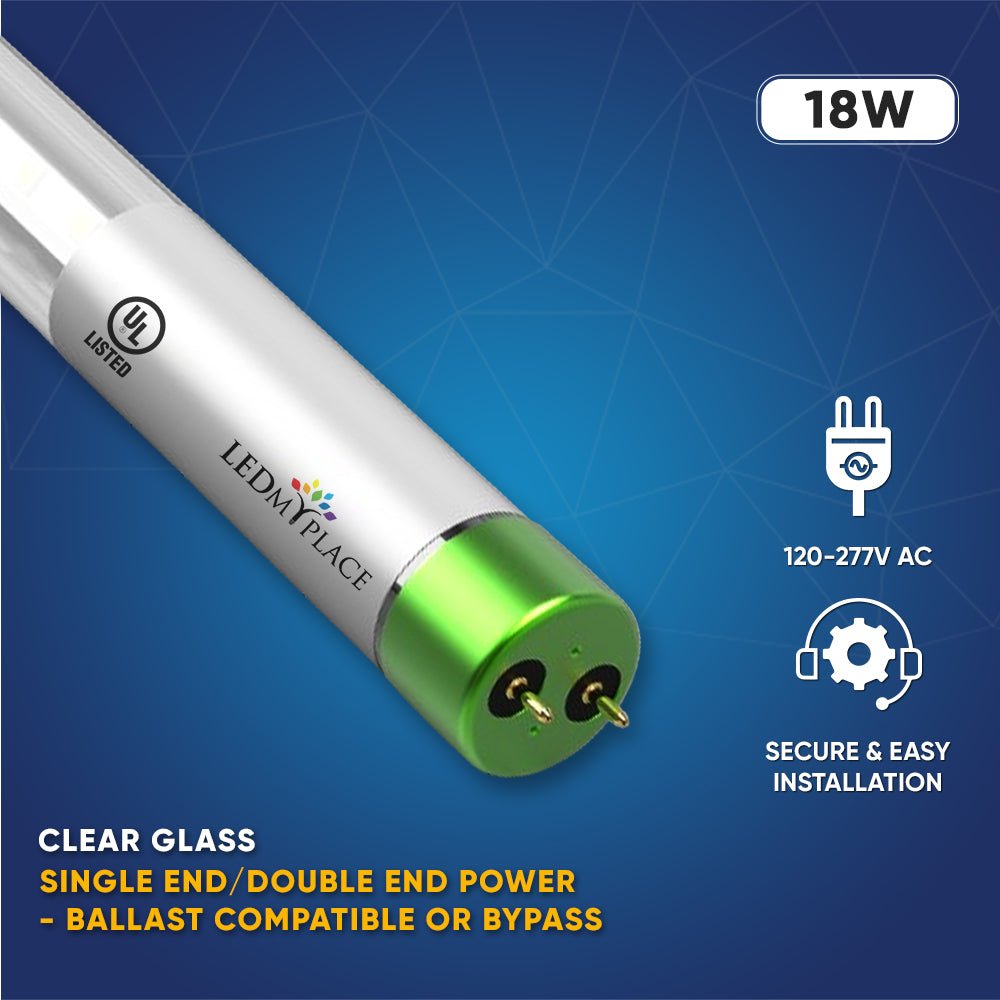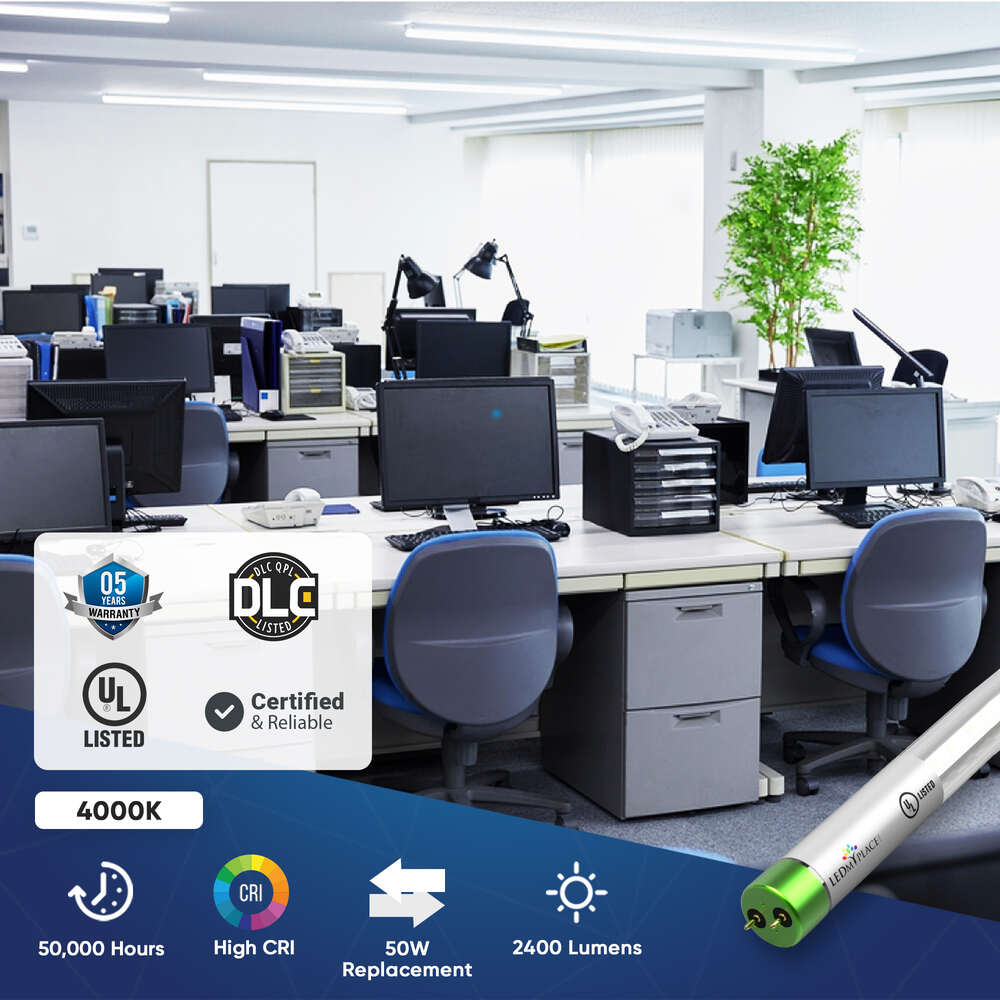Filter and sort
Plug & Play - Hybrid Type A+B - T8 LED Tube Light Bulbs [Works With & Without Ballast]
-
FREE SHIPPING on orders over $99
- MPN: TB060
- Warranty: 5 Years
Brightness: 1560-2860 LumensWattage: 22w/20w/18w/15w/12w/10wCCT: 3000k/3500K/4000k/5000k/6000k/6500kLife Hours: 50,000 HoursSold by the case of 1pc
$8.99 Ea.
$8.99 $12.99Save $4.00 (31%)FREE SHIPPING on orders over $99- MPN: TB006
- Warranty: 5 Years
Brightness: 2400 LumensWattage: 18 WattCCT: 6500 KelvinLife Hours: >50,000 HoursSold by the case of 15-Pack
$6.59 Ea.
$98.99 $145.99Save $47.00 (33%)FREE SHIPPING on orders over $99- MPN: TB026
- Warranty: 5 Years
Brightness: 1560 Lumens- 2860 LumensWattage: 22w/20w/18w/15w/12w/10wCCT: 3000k//3500K4000k/5000k/6000K/6500kLife Hours: 50,000 HoursSold by the case of 1pc
$8.99 Ea.
$8.99 $12.99Save $4.00 (31%)FREE SHIPPING on orders over $99- MPN: TB008
- Warranty: 5 Years
Brightness: 2400 LumensWattage: 18 WattCCT: 5000 KelvinLife Hours: >50,000 Hours$98.99 $145.99Save $47.00 (33%)FREE SHIPPING on orders over $99- MPN: TB007
- Warranty: 5 Years
Brightness: 2400 LumensWattage: 18 WattCCT: 5000 KelvinLife Hours: >50,000 HoursSold by the case of 15-Pack
$6.59 Ea.
$98.99 $145.99Save $47.00 (33%)FREE SHIPPING on orders over $99- MPN: TB019
- Warranty: 5 Years
Brightness: 2400 LumensWattage: 18Wattage Equivalent: 50 Watt ReplacementCCT: 4000 KelvinLife Hours: 50,000 HoursSold by the case of 15-Pack
$6.59 Ea.
$98.99 $145.99Save $47.00 (33%)FREE SHIPPING on orders over $99- MPN: TB015
- Warranty: 5 Years
Brightness: 2400 LumensWattage: 18Wattage Equivalent: 50 Watt ReplacementCCT: 6500 KelvinLife Hours: 50,000 HoursSold by the case of 15-Pack
$6.59 Ea.
$98.99 $145.99Save $47.00 (33%)FREE SHIPPING on orders over $99- MPN: TB016
- Warranty: 5 Years
Brightness: 2400 LumensWattage: 18Wattage Equivalent: 50 Watt ReplacementCCT: 4000 KelvinLife Hours: 50,000 HoursSold by the case of 15-Pack
$6.59 Ea.
$98.99 $145.99Save $47.00 (33%)About Plug & Play - Hybrid Type A+B - T8 LED Tube Light Bulbs [Works With & Without Ballast]
By making it simpler to mount led tubes, plug and play tubes introduced a new dimension to the industry. LED tubes must typically be retrofitted, which necessitates electrical work because the wiring must be reworked, and the electrical ballast must be removed to make room for direct-wire tubes.
LEDMyplace brings you the best Hybrid T8 LED Bulbs that last for 50,000 operational hours and come with the 5 years manufacturer’s warranty.
What are Plug and Play LED Tubes?
LED tubes that are plug-and-play, as the name suggests, do not need any custom retrofitting to be added. Plug and play LED tubes, also known as universal ballast compatible or ‘Type A' tubes, have an internal driver that allows them to work with a linear fluorescent ballast. Most Type A LED tubes operate with a number of ballasts, including T5, T10, and T12 fixtures.
Plug and play eliminate the need for costly electrical work, giving consumers more flexibility and ease of use.
Difference between Plug and Play LEDs and other LEDs
Although plug and play remain one of the most realistic and straightforward – requiring only a one-to-one swap and no technical expertise – there are some other choices.
There are three other choices to consider if you choose to switch from standard fluorescent lights to linear LED bulbs.
- Ballasts are no longer needed with the Ballast Bypass, also known as Direct Wire or Type B LED. They are operated by the line voltage, which is fed directly into the sockets. As a result, you will need to employ an electrician to remove the ballast and determine if the sockets need to be replaced.
- Type C tubes or remote driver tubes that need an LED driver instead of a fluorescent ballast. In comparison to the ballast bypass, the Type C tube lacks an incorporated internal motor. Instead, the LED driver is separate from the tube, allowing for greater installation versatility.
- Hybrid LED tubes, also known as type A+B, are often regarded as the future of LED tube lighting because they can be used with or without a ballast.
It's crucial to understand the difference between Plug and Play LED Tubes and other forms of tubes because it could determine which tube is best for your needs. Many different types of tubes are being sold as LED technology improves.
What Are the Advantages of LED Tubes That Plug-in?
Plug and play tubes, one of four LED tube types, have many advantages over their traditional counterparts.
Installation is easy.
The tube's most obvious benefit is that it can be used with your existing ballast, and installation should only take a few minutes. The transition from a fluorescent light to an LED bulb tube should be extremely easy and convenient as long as the plug-and-play tube is compatible with the ballast of your choosing.
Let’s binge into that and briefly understand the installation process
- Before beginning your installation, make sure the fixture's power is switched off at the breaker switch.
- Before touching the fluorescent tube, if the power has been on for a long time, make sure it isn't too hot.
- Remove the fluorescent tube from the fixture.
- Place the Plug and Play LED tube in the fixture and double-check that the pins are securely fastened to the sockets.
Low Initial Investment
The second benefit of plug-and-play tubes is the low upfront cost of purchasing the tube. Plug and play tubes are not only less costly than other types of led tubes, but they also don't require the assistance of a licensed electrician.
This means that you can save money by switching from fluorescent to LED lighting.
Energy Consumption – (Compared to fluorescent lights)
The third, and most noticeable, the benefit of this form of LED tube is the lower energy consumption. LED lights are up to 80% more effective than fluorescent lights, enabling them to generate more light with much less energy.
There are several advantages of switching to LED lights, allowing you to rest easy knowing that you are helping to save the world while still using high-quality lighting items.
Is it worthwhile to invest in Plug and Play LED bulbs?
For people who want to save money by using current traditional ballasts, plug-and-play LEDs are an extremely cost-effective and feasible solution. However, as hybrid tubes become more widely available, the market for plug-and-play tubes is gradually dwindling.
One might argue that the plug and play tube has no place in an LED tube array because of the hybrid tube's existence. The hybrid LED tube provides the same versatility as the plug-and-play tube while also offering a fallback option in the event that the user's current ballast fails.
Advantages of hybrid linear LEDs provide increased versatility
- Very Flexible
The hybrid lamps were created to operate with or without the current fluorescent ballast. You may use it as a plug-and-play lamp at first and then direct wire it to line voltage when the ballast fails.
- Installer's initial simplicity
Since the lamp snaps into the existing fixture without requiring any wiring changes, it can be installed by almost anyone.
A, B, and A+B types LED Tube Lights
Type A
Internal drivers in Type-A Plug & Play LED tubes allow them to operate directly from existing linear fluorescent ballasts. Installing Type-A LED tubes is a quick and easy way to upgrade your lighting while also saving money on energy. Anyone can easily remove fluorescent tubes and replace them with Type-A LED tubes without the need for rewiring or an electrician.
Description: This UL Type A tube has an internal driver that allows it to run directly from a linear fluorescent ballast. The majority of these items are compatible with T12, T8, and T5 ballasts.
Advantages: Type A LED tubes are the easiest to install because they simply replace the existing fixture with a Type A LED tube. Unlike the other alternatives, there is no need to make any electrical or structural changes to the existing fixture.
Type B
Type-B LED tubes, like Type-A LED tubes, have an internal driver. The integrated internal driver in Type-B LED tubes, on the other hand, is powered directly by the existing fixture's line voltage. Single-end-power (power supplied to a single end) or double-end-power (power supplied to both ends) Type-B LED tubes are available (power supplied to both ends). Your electrician will need to remove or bypass the existing ballast in order for this installation to work. Ballasts consume power as well, so bypassing the ballast eliminates compatibility problems, ballast replacement costs, and power consumption.
The LEDs in all LED lamps are powered by drivers. They are responsible for converting AC power from the utility company to DC power. LED lights are powered by DC. Some LED tube manufacturers build the drivers into the tubes themselves. Type "B" LED Tubes are the name for these tubes.
Single-Ended Power and Double Ended Power are the two types of Type B LED Tubes. SEP tubes (Single Ended Power) take power from just one end of the tube. It is powered by a non-shunted tombstone. There are two pins on the power end. One pin is used for line power, while the other is used for neutral.
The term "double-ended powered" (DEP) refers to the fact that power is sent to both ends. This is analogous to the operation of fluorescent tubes. You deliver a line to one end and neutral to the other end when using LED Tubes. It usually doesn't matter whether the line or neutral end is wired, so check the manufacturer's instructions to be sure. The ballast is removed or bypassed in this installation, which is crucial. The tube receives direct AC power. So, despite the fact that installation is more difficult, the ballast has been permanently removed from the fixture.
Description: This Type B tube, like Type A, is powered by an internal driver. The internal driver of Type B, on the other hand, is powered directly from the main voltage supplied to the existing fixture, necessitating a number of special considerations.
Advantages: Type B provides the simplest total system— retrofitting entails connecting directly to main voltage, bypassing the ballast, which eliminates any compatibility issues and maintenance costs associated with ballast replacements.
Type A+B
Aside from the two types of LED tubes, Type A and Type B, the third type of hybrid LED tube, also known as Type A+B, was designed as a combination of Type A and Type B. A hybrid LED tube is made up of both Type "A" and Type "B" LED tubes.
This tube can (might) work with an existing fluorescent ballast or run on its own. This is a great option for those who want to use the fast installation method with the ballasts and have a backup plan if the ballast fails.
Frequently Asked Questions
Q: Can the LED T8 hybrid type A+B tube be installed in both ballast-compatible and ballast-bypass configurations?
A: Yes, the LED T8 hybrid type A+B tube can be installed in both ballast-compatible (Type A) and ballast-bypass (Type B) configurations. This flexibility allows for easy installation in various lighting fixtures, making it suitable for retrofit projects.Q: How long is the lifespan of an LED T8 hybrid type A+B light tube compared to traditional fluorescent tubes?
A: An LED T8 hybrid type A+B light tube has a significantly longer lifespan compared to traditional fluorescent tubes. It can last up to 50,000 to 60,000 hours or more, while fluorescent tubes typically last around 20,000 hours.- Choosing a selection results in a full page refresh.














































































